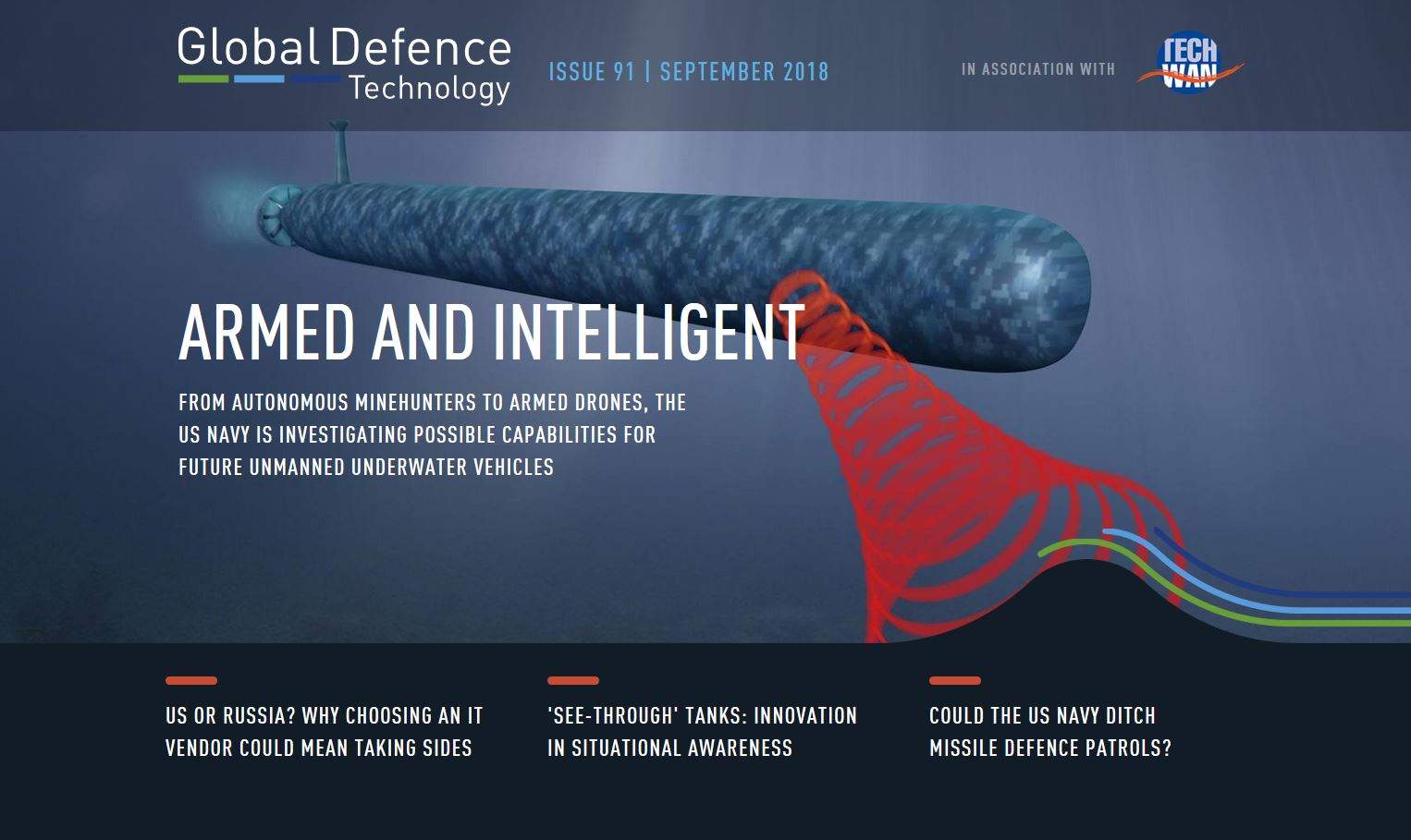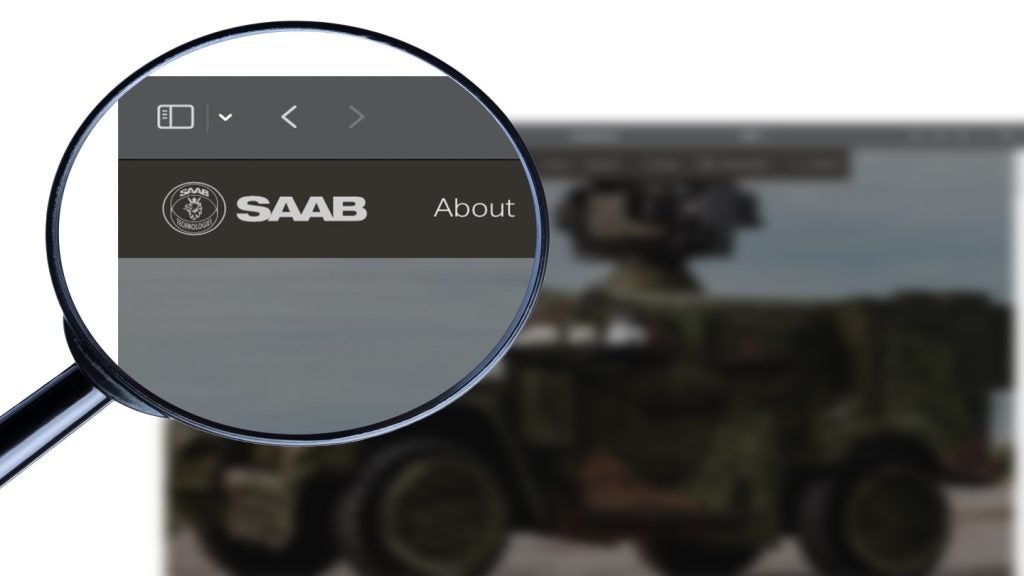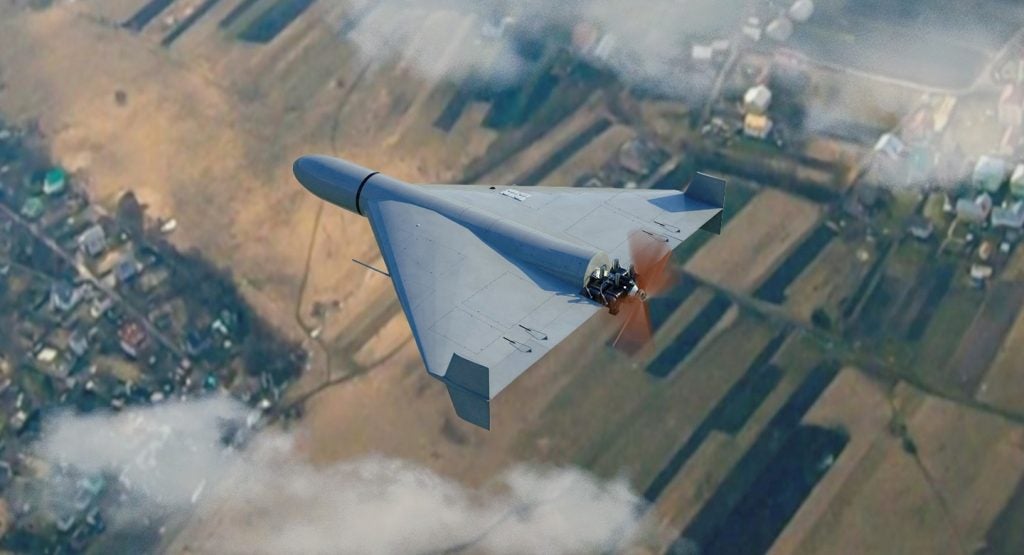
The latest issue of Global Defence Technology is out now and you can read it for free in the web browser of any device, including tablets and smartphones.
The US Navy is investing in unmanned underwater vehicles for near-term deployment, from autonomous minehunters to weaponised options. We check in on the tech in development and recently tested systems to find out what their future capabilities could encompass.
Also in this issue, we explore the US Navy’s future strategy in light of comments made by the Chief of Naval Operations that the navy’s ballistic missile defence patrols should be terminated in favour of a land-based BMD solution.
In technology, we speak to Hensoldt about its new Local Situational Awareness System for armoured vehicles, review the most interesting tech from Farnborough Airshow, and investigate the ongoing performance and cost problems plaguing the Watchkeeper UAV programme.
Plus, we find out why Russian and American dominance of the cybersecurity market could mean countries looking for an IT systems provider will also end up choosing a political ally, and whether this development could lead to a new cyber cold war.
In this issue
The cyber Cold War: Russian and US IT dominance draws new lines on the map
Building robust cybersecurity systems from scratch is expensive and laborious while off-the-shelf solutions tend to be Russian or American made. If a country doesn’t have the means to develop its own protocols and has to pick a side for its systems provider, could a new cyber Cold War emerge? Julian Turner reports.
Read the article.
How well do you really know your competitors?
Access the most comprehensive Company Profiles on the market, powered by GlobalData. Save hours of research. Gain competitive edge.

Thank you!
Your download email will arrive shortly
Not ready to buy yet? Download a free sample
We are confident about the unique quality of our Company Profiles. However, we want you to make the most beneficial decision for your business, so we offer a free sample that you can download by submitting the below form
By GlobalDataThe see-through tank: situational awareness for armoured vehicles
Hensoldt recently unveiled its new Local Situational Awareness System (LSAS) for wheeled and tracked armoured vehicles. It is designed to avoid the weaknesses caused by armour reducing lines of sight, using a suite of optics allowing for full awareness of surroundings. Elliot Gardner finds out more.
Read the article.
Farnborough International Airshow 2018: the future of flight
While military aerial displays were limited at this year’s Farnborough Airshow, the hectares of exhibition space were crammed with aircraft and the systems that support them. Berenice Baker reports on the latest military aircraft, innovations, stories and contracts to come out of the event.
Read the article.
Who watches the Watchkeeper?
In June the third Watchkeeper drone in a year crashed, leaving the entire fleet grounded. with programme costs and failures adding up, Callum Tyndall investigates the problems plaguing the Watchkeeper and what they could mean for the project’s future.
Read the article.
Could the US Navy ditch its missile defence strategy?
Three years into his stewardship of the US Navy, Admiral John Richardson is looking outside of the box when it comes to naval strategy and capability. Andrew Tunnicliffe explores the challenges the Chief of Naval Operations is facing and his call for an end to sea-based ballistic missile defence.
Read the article.
Armed and intelligent: The US Navy’s future UUVs
The US Navy is investing in unmanned underwater vehicles (UUV) for near-term deployment and looking into what their future capabilities could encompass. Berenice Baker takes a look at a recently tested system dedicated to keeping naval vessels safe by disabling mines, and future weaponised solutions that could engage enemy vessels.
Read the article.
Next issue preview
To meet the challenges of future operating environments, the US military – and others – will need systems that can operate and share data across all domains. While the idea of multi-domain is still largely conceptual, the requirement is already shaping the development of the next generation of equipment. We hear from leading technology developers how a seamless integration of systems across land, sea, air, space and cyber can be achieved.
We also speak to Recorded Future’s Insikt Group about its discovery of leaked US Air Force documents on the Dark Web, take a look at Dstl’s project to develop drones and unmanned ground robots for logistics support, and find out how Cranfield University researchers are tackling toxic contamination on live-fire ranges.
Plus, we check out the UK’s newly announced Tempest fighter jet, speak to Raytheon about its counter UAS solutions and round up what this year’s Farnborough Airshow has told us about the future of air combat training.







